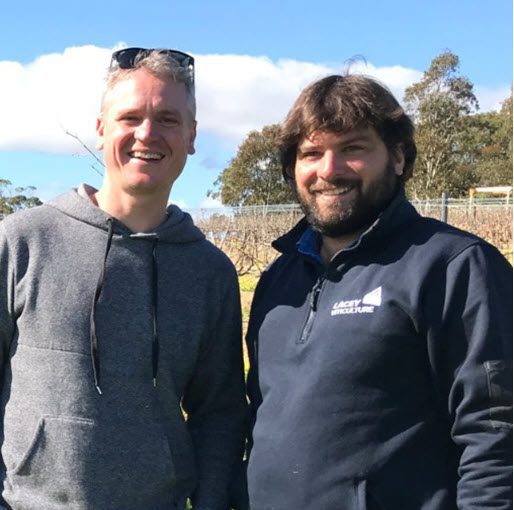1. Tell us about your experience in grape growing?
I’ve been a winemaker since 2008, prior to that I was in the cellar. It was during this time that really began to look closer at grape growing and how to improve the final product.
In the winery setting it is about working closely with the viticulture team to achieve good outcomes, not so much about day to day time in the vines. However, in 2014 we bought the Rayner Vineyard and my experience changed markedly! We live on site so I’m surrounded by my vines everyday. I’m so much closer to the process, it really gives me a deep understanding of why outcomes occur and how to improve the wine as a result.
2. What prompted you to want to be involved in the EcoVineyards project?
I had travelled to Europe (Piedmont in particular) and noticed small patches of forest within great vineyards. I asked the owners about the patches of forest and they mentioned how the natural flora was necessary to help with pest and disease control. I was fascinated!
Recently we decided to plant more vines in our vineyard and I really wanted to trial a similar thing with our native flora. Luckily this project came up at the right time!
3. What do you hope to achieve from your involvement in the EcoVineyards project?
I want to see some beneficial results from the native plantings to my grape growing. Be that the presence of beneficial insects and birds, or simply an increase in biodiversity of the plants at my home. I feel it will add to the beauty of the site having plants that complement the vines (flower at different times and are always green). Plus it’s a great use of land on my property that isn’t as suitable for growing premium grapes.
4. Have you tried to increase biodiversity on your property before undertaking this project? If so, how?
Yes. We were a part of a biodiversity PhD project to measure presence of native wasps that are predators to light brown apple moth. The plants have thrived, although I haven’t seen the results yet.
5. Why do you think it is so important for growers to try and build natural resilience on their property?
Removing or reducing the use of chemical pesticides is my main reason. We live on our vineyard with our two very young boys. Managed well, I’m sure that they are safe from the chemical sprays we use. However, removing them all together would be a better outcome! There’s also a cost benefit of course in the long run if the results are positive. And finally, I like the beauty the native plants can bring.
6. Looking to the future, what do you see as a new ‘normal’ for grape growers on their properties?
Biodiversity will be common practice, where rose bushes on the ends of rows are replaced by native Christmas bushes. And where vineyard blocks are complemented by adjacent areas that are perhaps less appropriate for growing great grapes but perfect for native flora that will attract beneficial fauna and look beautiful year round.
READ THE CASE STUDY

